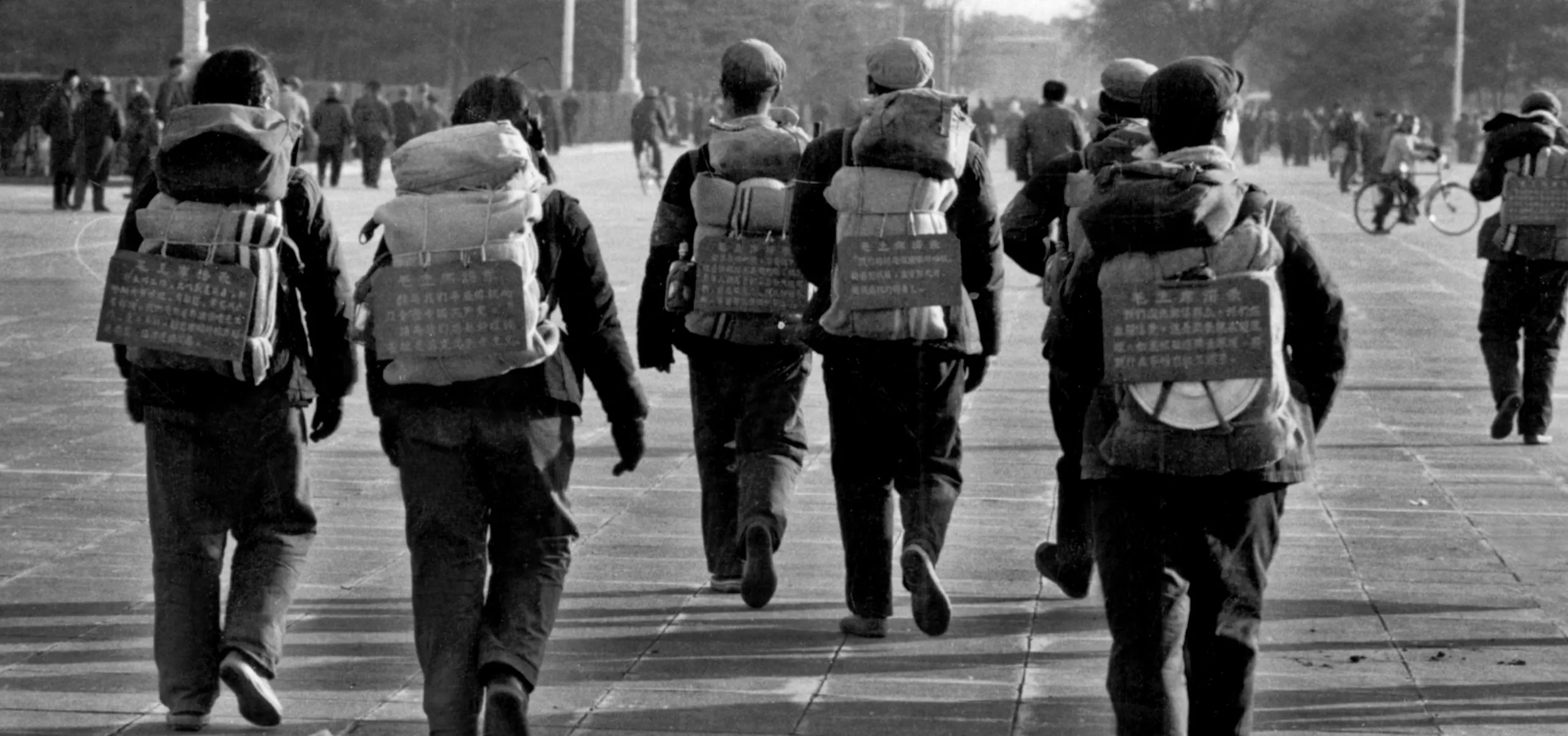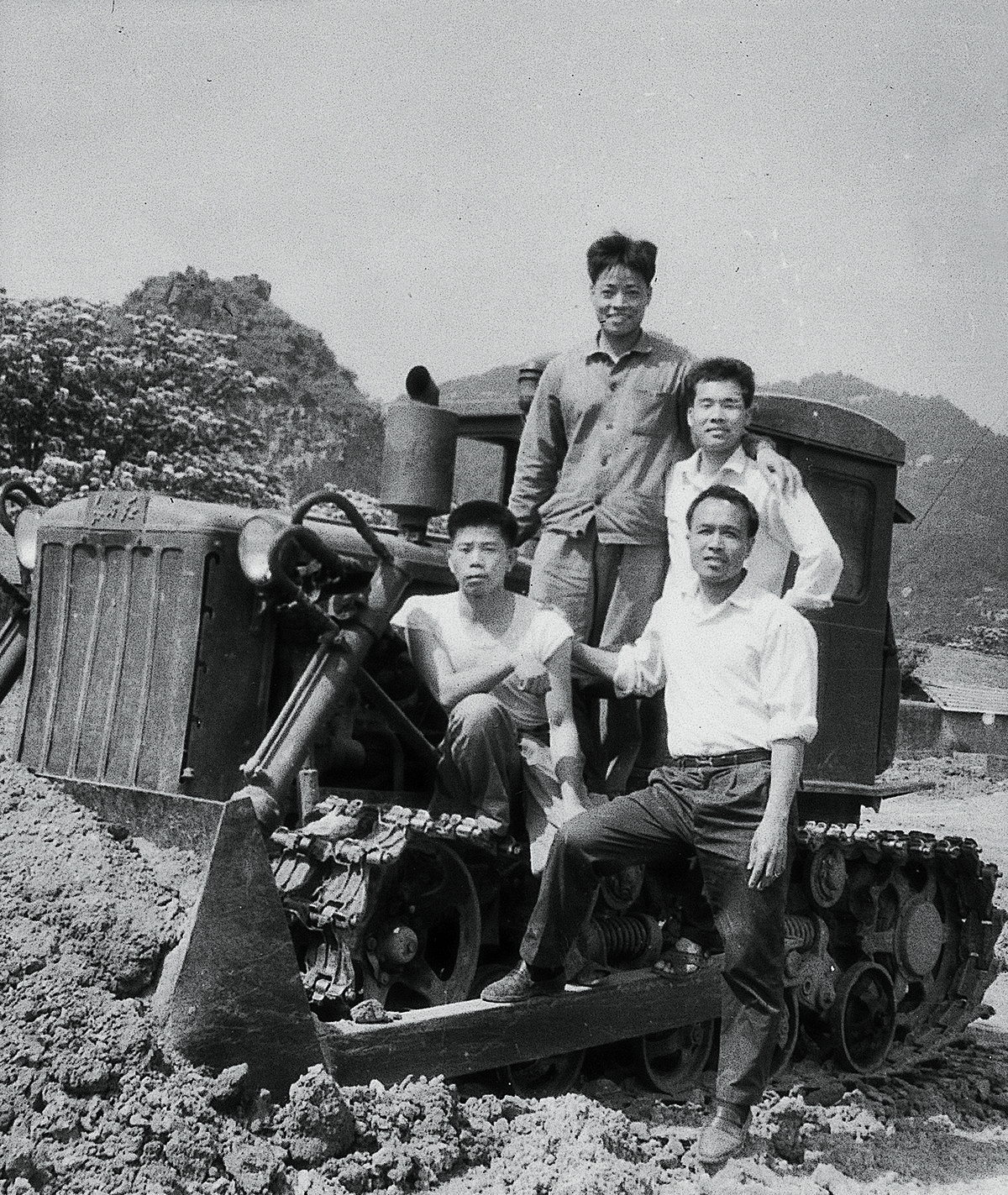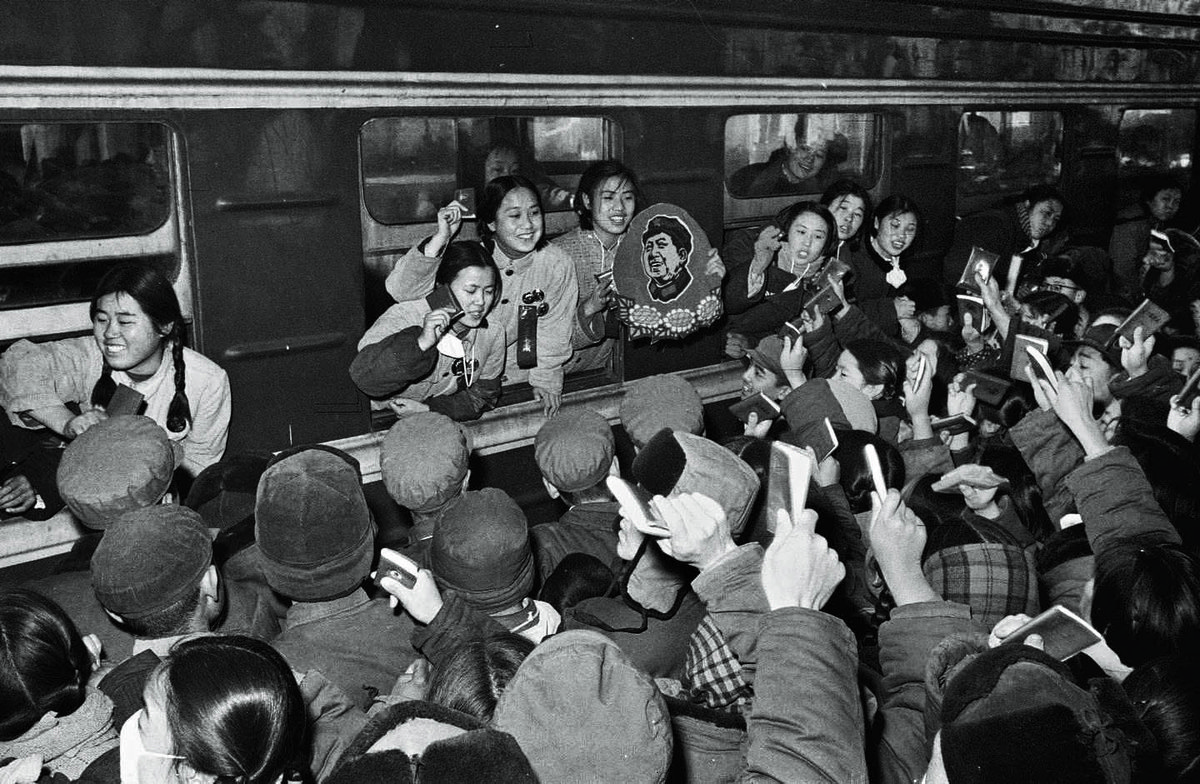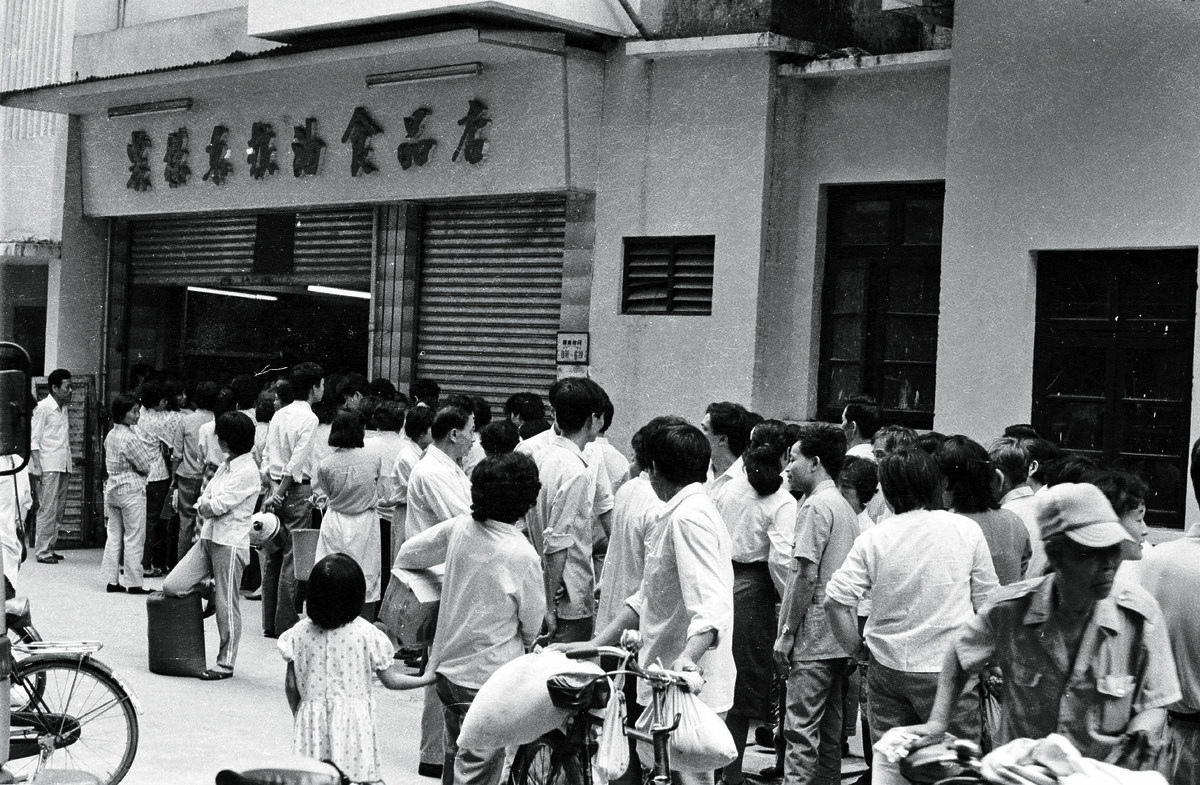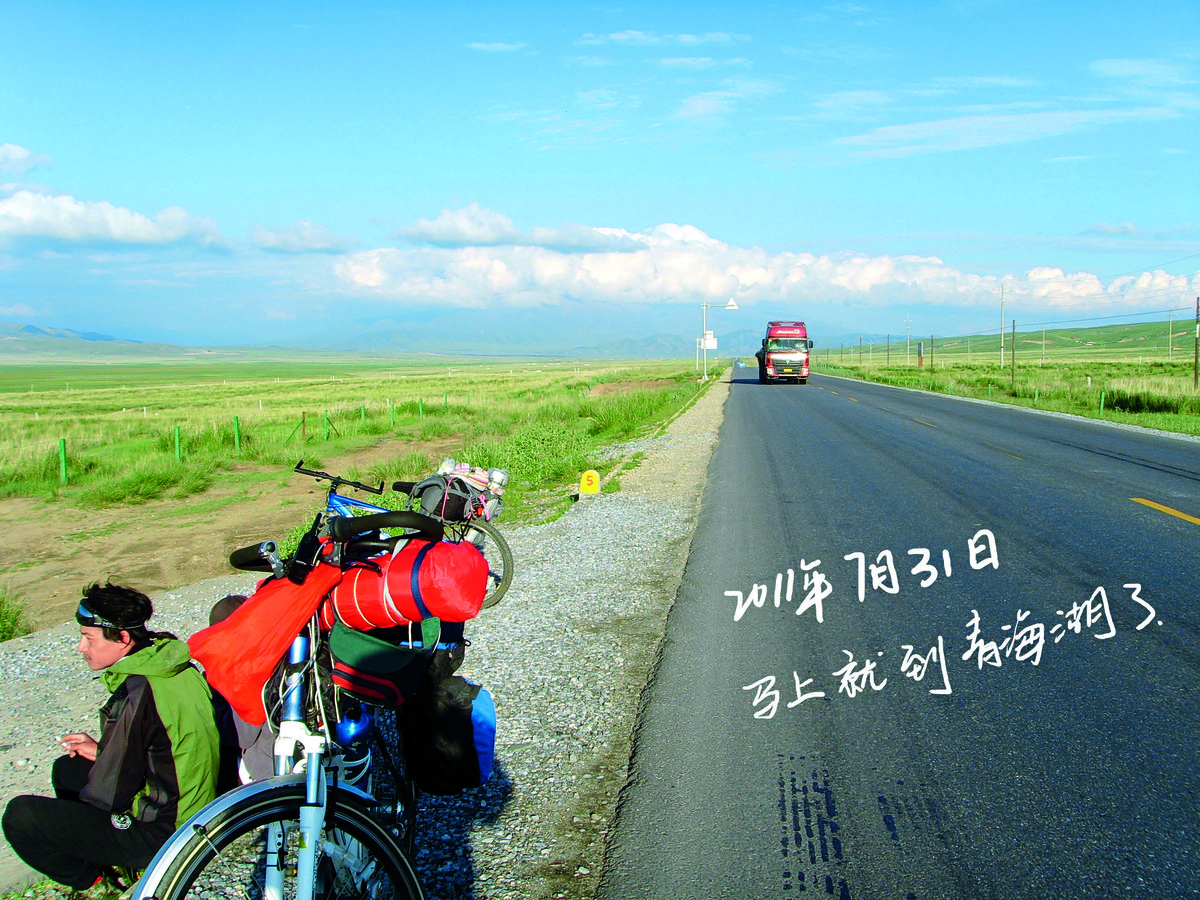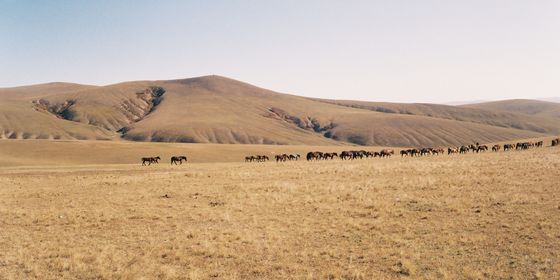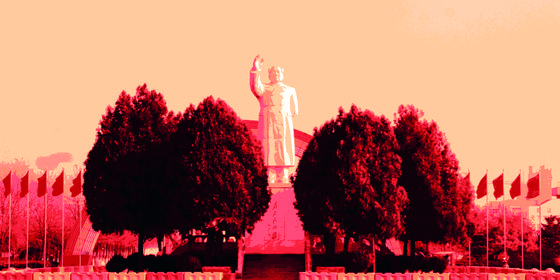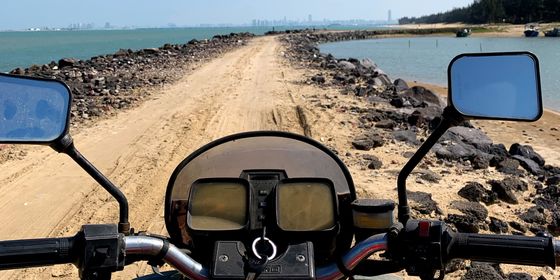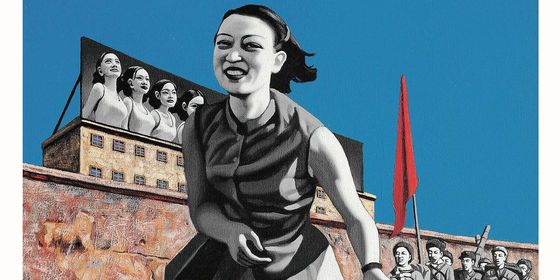How DIY travel originated in the Cultural Revolution and evolved into a modern quest for self-discovery
When Xiao Hu and his girlfriend set out last spring from Beijing with two bikes, a tent and 15,000 yuan in cash, the idea was to ride as far as their money would take them.
Starting from Xiao Hu’s hometown in Inner Mongolia, the couple planned to travel in a loop around China: hitting all the wild corners of Gansu and Qinghai, crawling up the Tibetan plateaus and landing in the lush jungles of Yunnan. It was a good 2,400 miles from their starting point. How did they prepare for the journey?
“I played some soccer,” Xiao Hu says. “My girlfriend, she took walks to and from work.”
The 23-year-old bartender and his girlfriend, a waitress, aren’t your typical protagonists in thenarratives of youth travel in China, which tend to revolve around the migration of poor rural kids to the cities or rich urban kids to the West. But the couple represents a long tradition of fly-by-the-seat-of-your-pants backpacking that in China dates back either 25 or nearly 50 years, depending on how you look at it.
Most travelers and travel historians date the beginning of the backpacking movement back to the late 1980s, but the phenomenon of widespread youth travel kicked off in the mid-1960s, with the start of the Cultural Revolution. Up until then, filial tradition dictated that children stay by their parents’ sides at least until marriage, a sentiment captured in the Confucian saying, “When your parents are alive, don’t travel far.” (父母在,不远游。Fùmǔ zài, bù yuǎn yóu.)
But in 1966, Confucian such notions of hierarchy and filial respect had been upended by a collective madness for revolution. That year, Chairman Mao proclaimed that all Red Guards—middle and high school students—should ride the trains and buses for free as part of a push to “take Beijing to the rest of the country.” Trains were rerouted, improvised crash pads were set up in factories and homes, and the People’s Liberation Army became responsible for ensuring the Red Guards had enough to eat.
The result was explosive. In a 1968 interview, quoted in the newspaper Revolutionary Worker, an American who was then studying in Beijing remembers the sudden influx of students into the capital: “They had heard about all these groovy people out in the streets, making revolution, following Chairman Mao, you got a right to rebel. So they came. Our school had 1,800 regular students. All of a sudden, there were 7,000 more from Tianjin, living all over the place. We figured we could spread the revolution by going outside of Beijing. The Central Committee decided that it was a good idea for us to travel.”
As young revolutionaries from Beijing fanned out across the country to spread revolution, Red Guards from the countryside began making pilgrimages to the capital to see their leader—a wave that Louise Chipley Slavicek’s book The Chinese Cultural Revolution estimates to have encompassed 12 million people by the end of 1966.
Among these pilgrims was a young Shandong woman surnamed Zhang, who at the age of 15 made the trip from her hometown to Beijing as a part of one of the first “Red Guard Great Exchanges” (红卫兵大串联 Hóngwèibīng Dàchuànlián). For Zhang, now 62, it was a thrilling (if grueling) experience.
“At that time, the trains were really, really crowded and had no seats. So we stood the 10 to 20 hours all the way to Beijing,” she remembers, noting that even young children whose parents wouldn’t let them go would often run away in secret to join the mass movement. “At that time everyone worshiped Chairman Mao and wanted to see him,” she says.
This wasn’t the only trip Zhang and kids like her would make during that era. The Central Committee conceived of other “Great Exchanges” in 1967, including a “Long March” to the Red Army base at Jinggangshan. “Every day we’’d walk 70 or 80 li (20 to 25 miles),” Zhang says.“Every day, we set out before dawn.…When the sun came out, there was still frost on our heads, and our feet would be swollen by the end of the day.”
It was on these long journeys that the heady fun of the early days began to turn to weariness.
“At that time I didn’t feel it was fun. I was really tired.” Zhang says. “It was meant to teach us the Red Army spirit’s ability to bear hardships, and give us a taste of the Long March ourselves.”
Red Guards weren’t the only ones pained by the chaotic waves of travel. According to another former Red Guard surnamed Li, the departures left parents heartbroken. “Although their parents supported them, they were also very troubled in their hearts, and very helpless,” he says.
Despite the thrill that accompanied the Red Guard trips, Li is adamant that these mass movements and other government-instigated journeys cannot be counted as traveling in the truest sense.
“At that time, people simply didn’t have the power to decide their own fates,” he says. “They couldn’t just go wherever they wanted; it was impossible.”
According to a study published by the US Library of Congress, official efforts in China to circumscribe free travel began as early as 1952 “with a series of measures designed to prevent individuals without special permission from moving to cities to take advantage of the generally higher living standards there.” Aside from approved parties like the Red Guards, the Party limited migration to the cities during the Cultural Revolution for political and practical reasons.
In 1967, the Red Guards also lost their free pass, when it was decided that their train privileges should be revoked, and they should return to school. After that, the largest remaining migration was that of the “educated youths (知识青年 Zhīshì Qīngnián),” also known as ”rusticated youths,” intellectual young people who were sent to the countryside for re-education. Experts estimate that from 1962 to 1978, almost 18 million of such people were sent to the countryside.
From the early 70s on, individual travel was tightly regulated by the government, which remained concerned about limiting migration into the cities. The log-jam didn’t clear until well after the start of Reform and Opening Up (改革开放 Gǎigé Kāifàng) in 1978. Though travel restrictions were relaxed in the late 70s and early 80s, when an increase in food supply allowed the cities to absorb more migrant workers, most people remained too poor to travel recreationally.
That began to change on a small scale in the early 80s, when college students with money and time began making small trips during their semester holidays. Among these was Chen Yimu, who at the age of 17 left his small hometown in Anhui province for university in the capital city, Hefei. It was 1979, and for Chen, even the trip to Hefei was a revelation.
“At that time my feeling was, Hefei is so big,” he remembers. “This first trip included a lot of firsts in my life: the first time traveling so far away from home, the first time staying in a hotel, the first time seeing traffic lights and public transportation on the streets, the first time crossing the Yangtze River, the first time taking a train, the first time in a big city. This trip was the first step in opening the great door of life. From that time on I was no longer the small boy who’d never left his small town.”
The trip planted a seed of wanderlust in Chen; throughout college, he took several short-distance trips to nearby cities like Nanjing and Wuhan. After graduating in 1983, Chen moved to Beijing for work, spending his free time biking to every corner of the city. By then, Reform and Opening Up was in full swing, filling the country with hope. “The 80s were an era brimming with passion,” he says. “Young people dared to dream and dared to act. A lot of people were writing poetry, and I would often hear of people riding bikes to Xinjiang or the Northeast.”
An over 300-kilometer bike trip to Zhangjiakou, where his brother was stationed for work, cemented Chen’s his love for rough, DIY travel. The term “backpacking (背包旅游 bēibāo lǚyóu)” had not yet been invented, but the idea was starting to spread.
“For my generation, the practice predated knowledge of the term,” he says. Yet even after the beginning of Reform and Opening Up, travelers in China were still few and far between. “During that era in China, there wasn’t even that much normal touring,” he says, “and there were hardly any backpackers… at least I never saw any.”
Part of the reason for this was that in the 80s, the vast majority of people then were still too poor to travel, and a sizable portion of people’s living allowances came in the form of government ration tickets.
“You needed tickets for so many things back then—rice, cotton, oil… And the price would be higher if you didn’t have any,” remembers Anne Gunn, an American who studied in China during the 1980s. “Tickets only worked in your own province unless you were privileged and had national tickets. So it was expensive to go away from home.” For those who could afford to take trips, vacations were more likely to be reserved for destinations that earned bragging rights, like a capital city or a historic monument.
According to John Israel, another American who has led bike trips and tours through China since 1978, locals weren’t the only ones paying through the nose to travel.
“At that time, foreign travelers in China [almost all part of organized tour groups] were not permitted to live anywhere except in approved top-end hotels,” he says. Israel tried to convince the China International Travel Service to join the international youth hostels movement to encourage more visitors, but he says they were unwilling to give up foreign capital. “The deal-killer was the word ‘‘inexpensive,’” he says.
A few independent travelers continued their maverick jaunts through China, but most Chinese stayed at home through the end of the 80s. Things started to shift in the 90s, when two important changes took hold: first, the growth of the economy; and second, the introduction of a holiday system that gave most employees between seven and 15 vacation days a year. The increase in spare time boosted domestic travel as well as outbound tourism.
Nonetheless, for a country still recovering from 30 years of economic ravages, buying the bare necessities remained the priority. As a result, most people turned to an unlikely source for their vacations: work.
“In the 90s, more people were traveling with public funds, mostly organized with their danwei (单位 work units),” says travel photographer and longtime backpacker Cheng Yuan. In a Sina blog entitled, “The Rise of the Chinese Backpacker,” he adds, “People didn’t understand the concept of paying for your own travel, and even felt it was a little foolish. ‘Money should be saved!’ my mother would remonstrate every time I took a trip.”
Independent travel grew slowly throughout that decade, but from the year 2000, the idea of travel as both a leisure activity and a means of self-enrichment began to take hold in the public imagination.
“2000 to 2010 was an era of extreme growth for Chinese backpacking,” Cheng Yuan writes. Much of this was related to the economy, he says, which improved markedly during and after the 90s. “By the year 2000, there were more holidays from the workplace, and the new generation was more interested in the pursuit of the self. With so much social pressure, they all wanted a chance to escape from the stress, to go out and see the world. In addition, there were now discount tickets to travel abroad, and it became much easier to get visas now, so more and more people were traveling.”
The internet also had a major impact on the spread of backpacking as a culture and a philosophy. A popular traveling forum called the Prosperity of Magnificence (如火如荼的兴旺) sprouted up on Sina.com, and the term “backpacker (背包客 bēibāokè)” began to gain traction. Much like their Western counterparts, Chinese backpackers defined themselves in opposition to traditional tourism.
“These so-called backpackers, to summarize simply, make entire journeys themselves. For them, traveling is a kind of learning experience, a way of life,” writes Cheng. “Backpackers are not satisfied by just following the scenery along the road. Instead, they try to experience their surroundings.”
The movement has sprouted a host of subcultures, ranging from the kind of bare-bones bike trips like Xiao Hu’s to more elaborate expeditions undertaken by middle-aged mountaineers. The majority fall somewhere in between: young professionals who squeeze trips into holidays and weekends; students who journey to take summer jobs or internships in other cities; and migrants workers from the countryside who spend a year or two saving money, before launching shoestring trips that last as long as their money does. As Cheng Yuan notes, at this period in China’s backpacking history, mindset matters more than money: “They are traveling to reappraise the value of life. For them, the destination is of course important, but the learning experience of the travel itself is something to which they pay even more attention to.”
This kind of mindset is an important development. A number of backpackers from the generation born in the 80s told us of the stark gap between their own aspirations of self-discovery and self-development, and their parents’’ more practical—and fearful—attitudes
“I never told my parents about the trip,” Xiao Hu admits. “They wouldn’t understand. My parents never traveled in the true sense of the word. They didn’t have this way of thinking.”
A Beijing bar-owner who goes by the nickname “69” and spent years backpacking shared a similar experience.
“There’s definitely a generation gap there,” he says. “Backpacking is all about freedom and self-determination. That’s something [my parents] didn’t have when they were young. They didn’t understand why I wanted to do it, and they worried about me a lot about me.”
Yet the rising popularity of backpacking among young people is an indication of improvements in the financial and personal well-being that so worried their parents. Fifty years ago, trips of this kind would only have been made in the face of extreme hardship, political campaigns, or even starvation. Today, they trips serve as a kind of coming-of-age experience for young people with the means and the courage to do it.
When Xiao Hu and his girlfriend returned to Beijing after three months of biking, he says he felt like a changed person.
“After I came back, I was much more serious about the way I did things. Not like when I was younger…I shed a lot of the uncertainty of youth. Now I have a really clear-cut sense of what I want to do with my life and with work, what I’m struggling for. I know how to take things steadily, step by step, and move forward. Before I traveled I didn’t really have a firm grasp on how to do things.”
So does that mean he’s done with traveling? “Of course not!” he says. “If I have money and time, I’ll go traveling again. There are still a lot of places I want to go.”
This is a story from our archives: It was originally published in May 2012 in our issue “Adventure Junkies,” and has been lightly edited and updated. Check out our online store for more issues you can buy!
Want more stories about DIY travel? Read about China’s first backpacker, Xu Xiake of the Ming dynasty, or check out stories from our travel section, On the Road, taking you to hidden corners of the country and to the rougher sides of well-known travel routes like Hainan and Yunnan.





